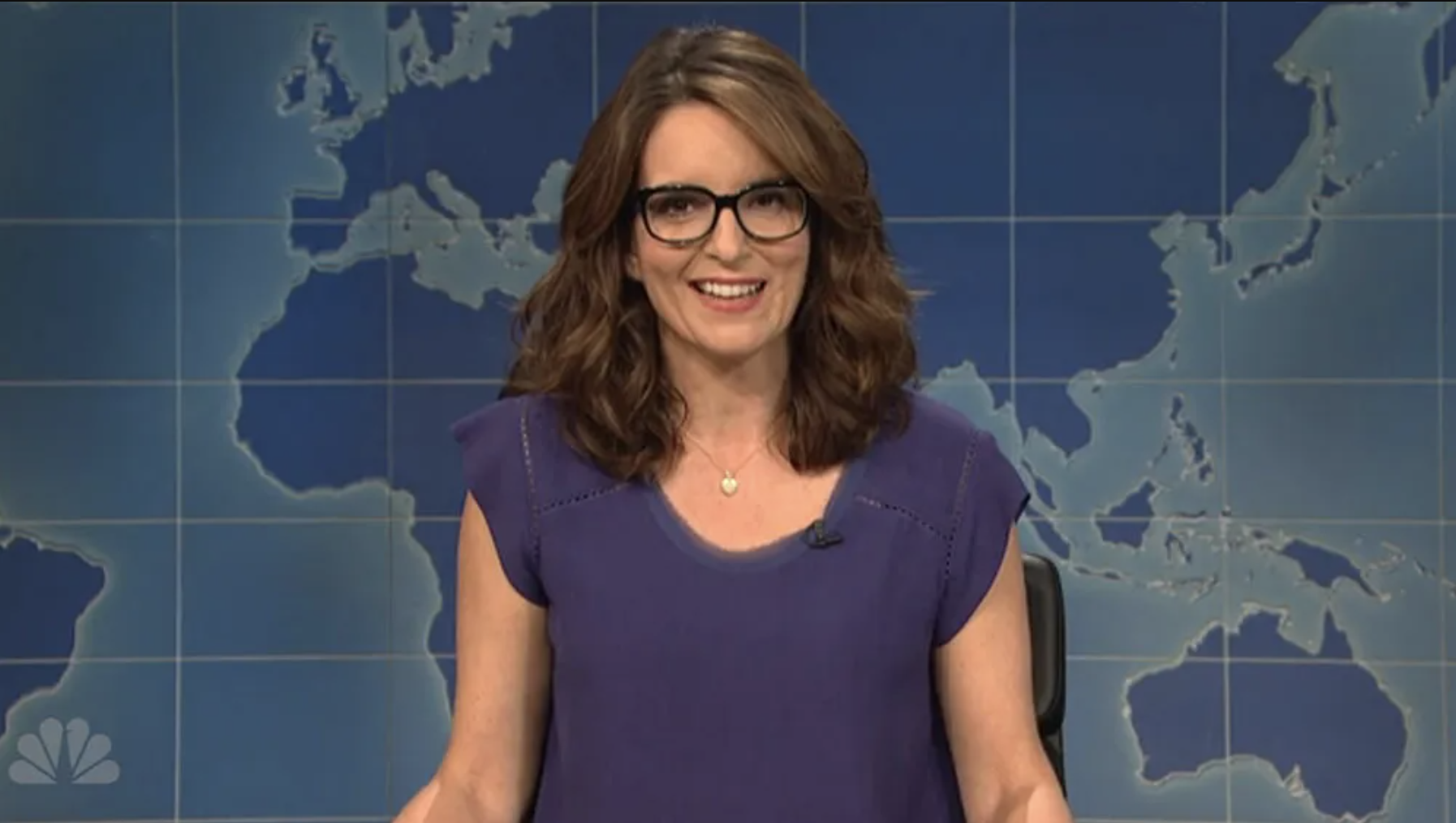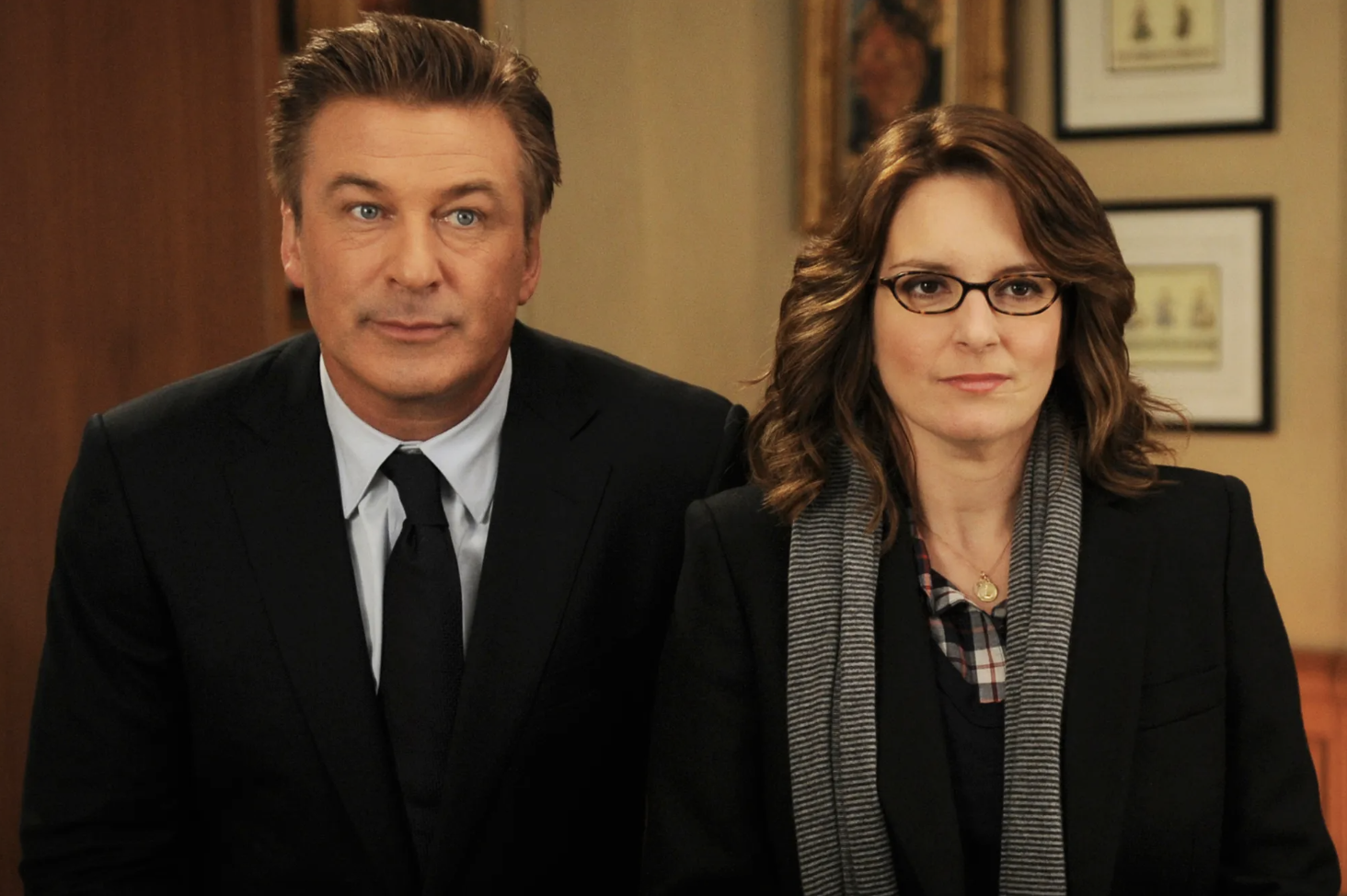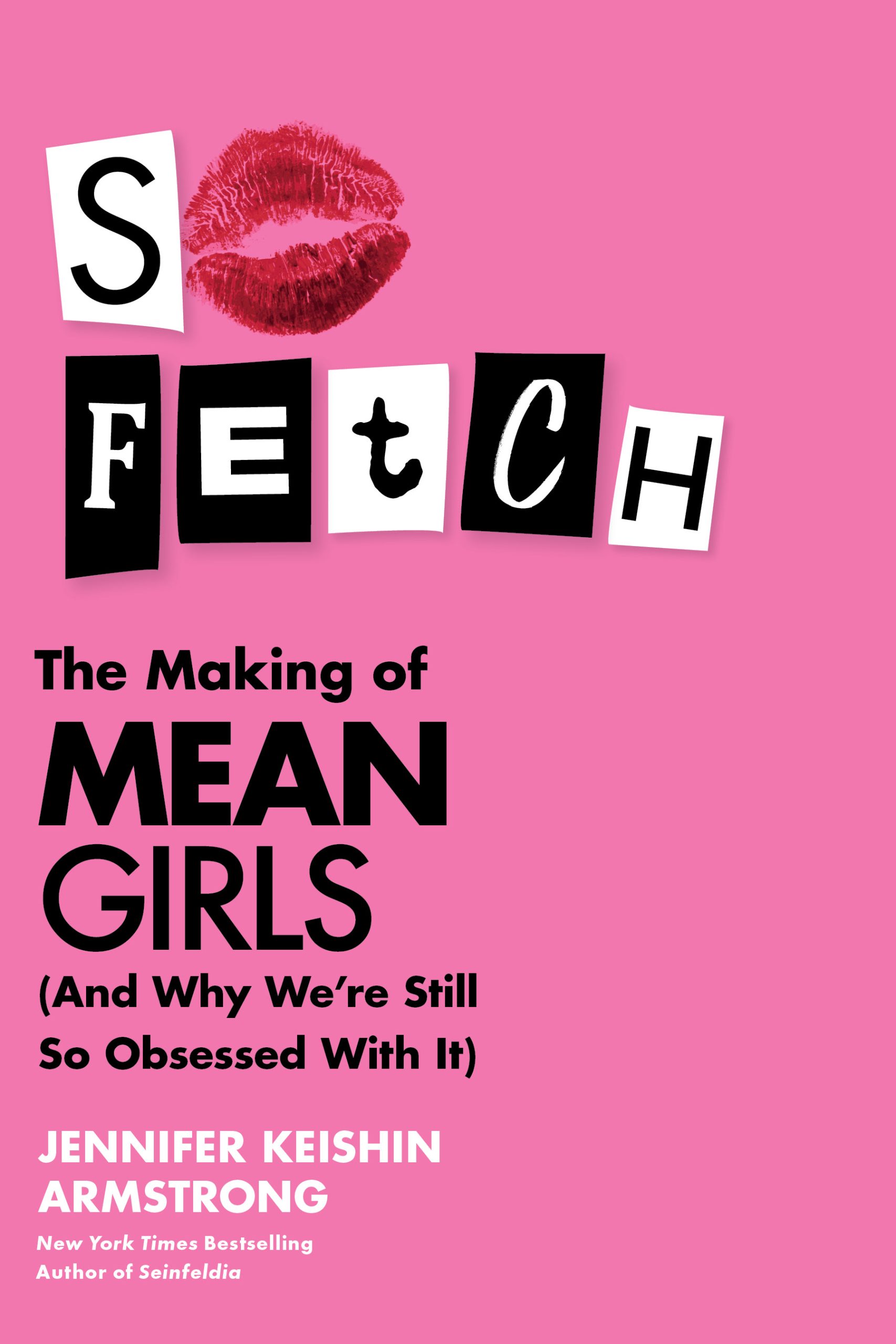
🏆 Recognizing #StoriesThatMatter. Never miss a newsletter! Sign up and have #PeabodyFinds delivered to your inbox.
When Tina Fey entered public consciousness as the co-anchor of Saturday Night Live’s “Weekend Update” news segments in 2000, she was a revelation. Here was a woman who was as snarky as her male co-stars, who ran the writing team, and who wasn’t afraid to direct her sketches squarely at women in the audience. (Please see: “Mom Jeans,” “Woomba.”)
Fey grew up in Pennsylvania with a comedy-focused family, her parents sneaking her in to see Young Frankenstein and sharing their love for Saturday Night Live, Monty Python, and the Marx Brothers. After college, she worked with The Second City in Chicago and submitted material to SNL. She eventually went on to become Saturday Night Live’s first female head writer and half of the show’s first all-female “Weekend Update” news team with Amy Poehler.
At the same time, she wrote the surprise hit film Mean Girls, which came out in 2004, and created the Peabody-winning sitcom 30 Rock, which premiered in 2006. Both became tremendously influential, with their sheer density of jokes and quotable lines. Mean Girls lives on in our culture as if it was in theaters yesterday because of its overwhelming quotability. (“You go, Glen Coco,” “Get in, loser, we’re going shopping,” “I want my pink shirt back,” need I go on?) In 2014, a writer for The Atlantic actually calculated the rate of jokes per minute of TV’s most popular sitcoms, and 30 Rock came out on top with 7.44 per minute. That is, just to be clear, more than one joke every ten seconds.
With Mean Girls returning to theaters in musical form, the original film celebrating its 20th anniversary this year, and I myself publishing a new book about the phenomenon, it’s also the perfect time to reflect on Fey as one of the strongest influences over comedic writing in the past two decades. Many have tried to imitate her joke-heavy, throwaway-on-throwaway-line, weird-as-it-wants-to-be, beautifully melodic writing. Only a few have come close to succeeding.
It’s a style she began to develop in Mean Girls, with its plentiful one-liners as well as its fantasy sequences, interstitials, and physical humor. The physical humor was sparingly used but extreme when it showed up. At times it was slapstick, as when Lindsay Lohan’s character, Cady Heron, strutting confidently down a school hallway, bumps into a trashcan and winds up head down inside, legs flailing above. At other times, it was dark, as when Rachel McAdams’ villainous character, Regina George, gets unexpectedly mowed over by a bus.
While Fey’s style first became apparent in Mean Girls, it was 30 Rock that solidified it throughout its seven-season run. When 30 Rock went on the air in 2006, it was expected to flop. It followed the adventures of a crew putting together a late-night sketch show, which happened to be the exact same premise of the far more prestigious Studio 60 on the Sunset Strip, created by Aaron Sorkin, which was premiering that same fall … on the same network, NBC. But 30 Rock far outlasted Studio 60 and continues to be a streaming favorite today—despite, it should be noted, some undeniably problematic elements, particularly some blackface jokes that have been removed from streaming rotation.
With 30 Rock, Fey single-handedly changed television comedy and invented a new comedic style that has pervaded airwaves ever after and remains one of its most potent strains. What she began with Mean Girls, she took to more idiosyncratic levels with 30 Rock. The almost cartoonish visual style, full of whip-pans and exaggerated sequences (some fantasy, some just absurdity), mimics the frantic energy of the dialogue, which is so dense with jokes—many of them throwaways and non-sequiturs—it’s nearly impossible to catch every one-liner on the first watch. (Just a tiny selection: “I saw my grandparents making love once, and I didn’t leave right away!” “I watched Boston Legal nine times before I realized it wasn’t a new Star Trek.” “He certainly wasn’t a Swiss prostitute that Martha Stewart recommended to me.” “You know what they say, boys. If you can’t stand the heat, get off of Mickey Rourke’s sex grill.”) Though it has shades of everything from screwball comedies to Seinfeld, it is its own distinct approach, recognizable as it was transported from 30 Rock to Fey’s even more extreme follow-up, Unbreakable Kimmy Schmidt, a wacky sitcom about a cheerful cult survivor making her way in New York City.
Fey’s style has spread from there, becoming one of the most influential forces on American TV comedy in the last 15 years. Fey has built her own empire as a producer, mentoring the similar voices of Tracey Wigfield (Good News, the Saved by the Bell reboot) and Meredith Scardino (Girls5eva). Her influence is noticeable in the work of Mindy Kaling, who has built her own empire with Never Have I Ever and The Sex Lives of College Girls. It’s also clear in some of the most critically adored series of recent years: Barry‘s marriage of a deadly serious premise with colorful characters who love a throwaway joke, for instance. The character NoHo Hank is basically straight from 30 Rock … if 30 Rock had Chechen gangsters. Schitt’s Creek‘s wonderfully detailed hints at the Rose family’s former over-the-top life could have come straight from a 30 Rock gag about 2000s reality stars; Alexis has been held hostage by a Saudi Prince, and dated a Ugandan diamond smuggler as well as Vin Diesel and Josh Hartnett.
As Mean Girls‘ Cady Heron would say, the limit does not exist when it comes to Fey’s effect on TV comedy. Or as 30 Rock‘s Jenna Maroney would say, “So I called him and I was like, ‘OJ, where are you?’ And he was like ‘Wait you’re alive? Then who did I kill?'” Of course, that would have nothing to do with the point, and you might not even catch it until your third viewing of the episode, but that’s Tina Fey for you.
Liz Lemon’s Best One-Liners from ’30 Rock’

30 Rock has made a number of best-shows-of-the-21st-century lists, including coming in at number 4 on a recent one by The Hollywood Reporter, which described it this way: “Tina Fey’s scrappy, surreal and sublime NBC sitcom about the inner workings of a bottom-rung NBC sketch comedy series should never have worked on paper. … But the platonic chemistry between Fey and Alec Baldwin, who plays her debonaire network exec boss/foil Jack Donaghy, transforms the clever joke machine into a treatise on professional growth and leadership.”
Where to Read: The Hollywood Reporter

My cultural history of Mean Girls tells Fey’s comedy origin story: Clocking her place as an outcast at school, Fey went on the defensive, wielding her wit to make fun of other girls before, or better than, they could make fun of her. When she grew up to become the first female head writer at Saturday Night Live, she adapted Rosalind Wiseman’s manual for parents of adolescent girls, Queen Bees and Wannabes, into the 2004 classic. It was funnier than any teen girl comedy before it, with an edge that made it a Millennial touchstone. Mean Girls established Fey as a serious script-writer and laid the foundation for 30 Rock and her sitcom empire.
Where to Buy: HarperCollins
